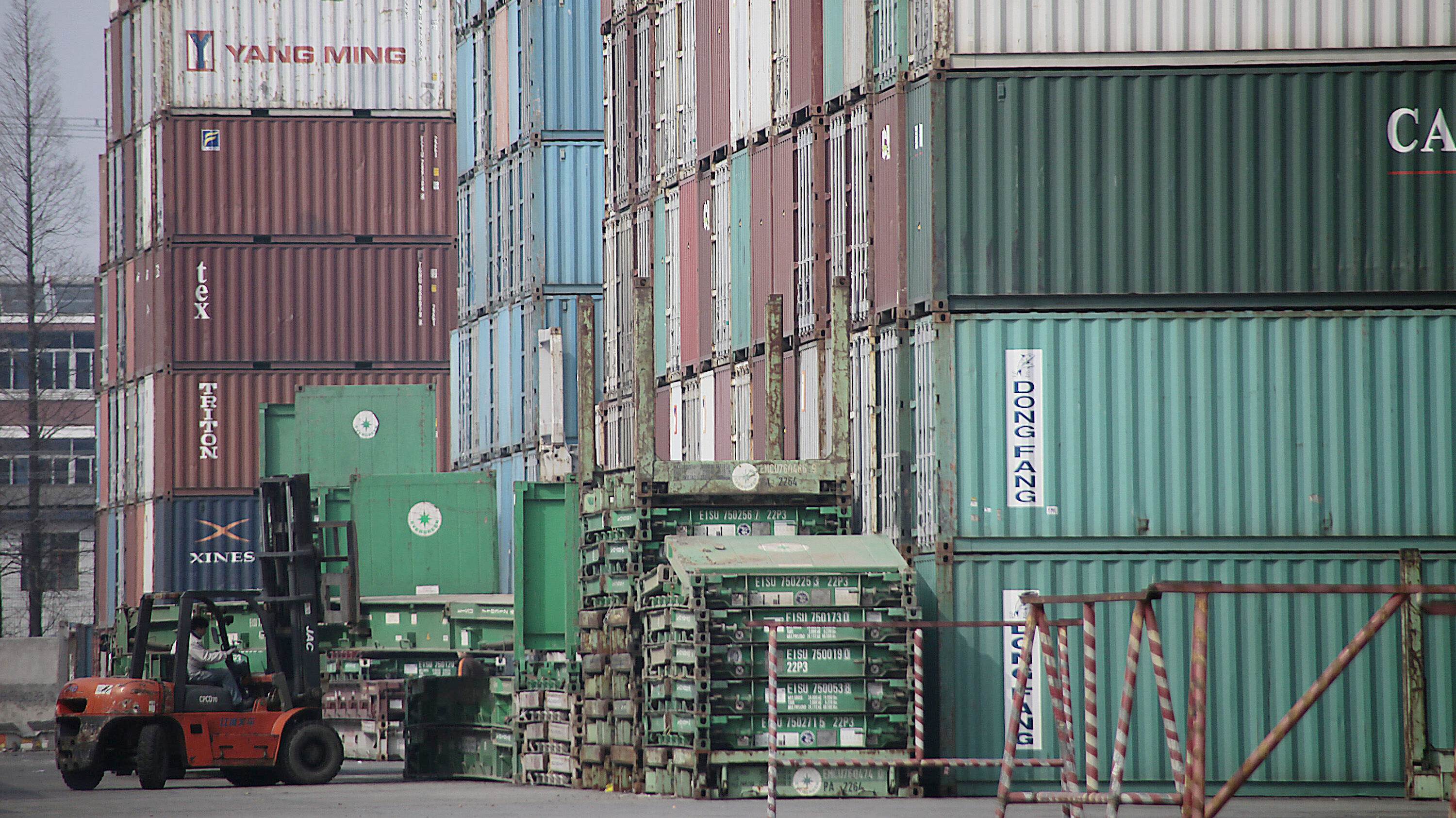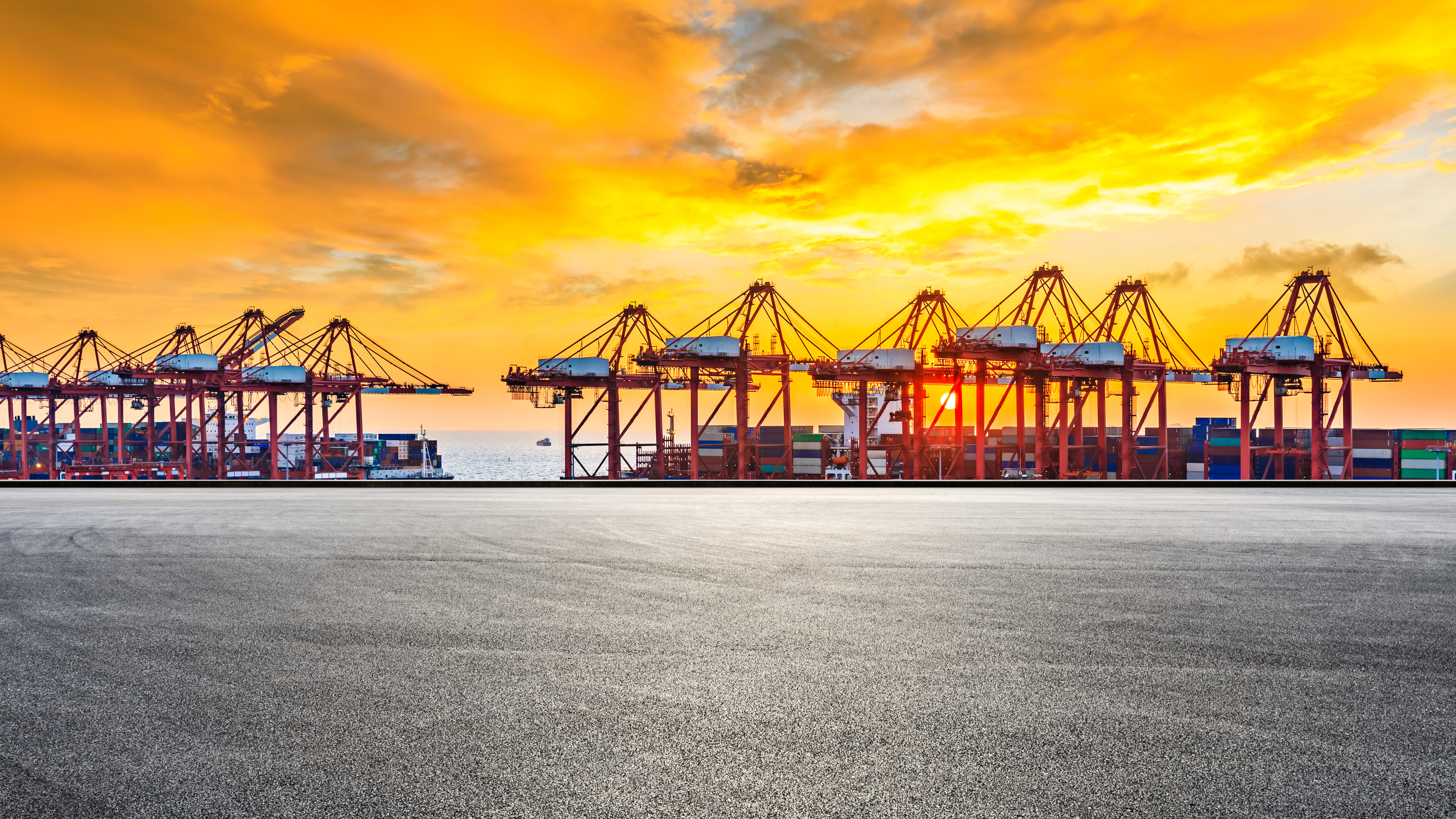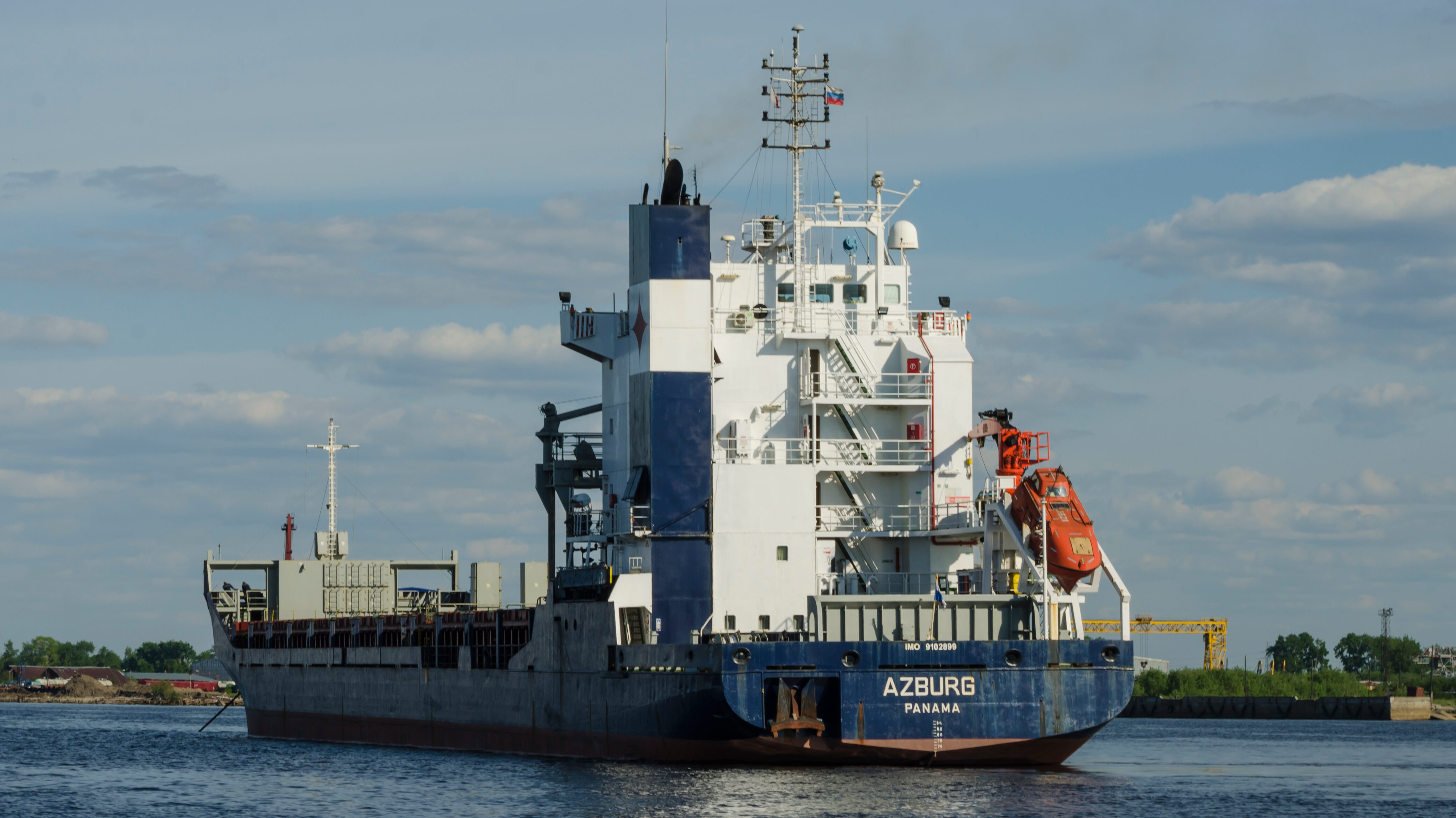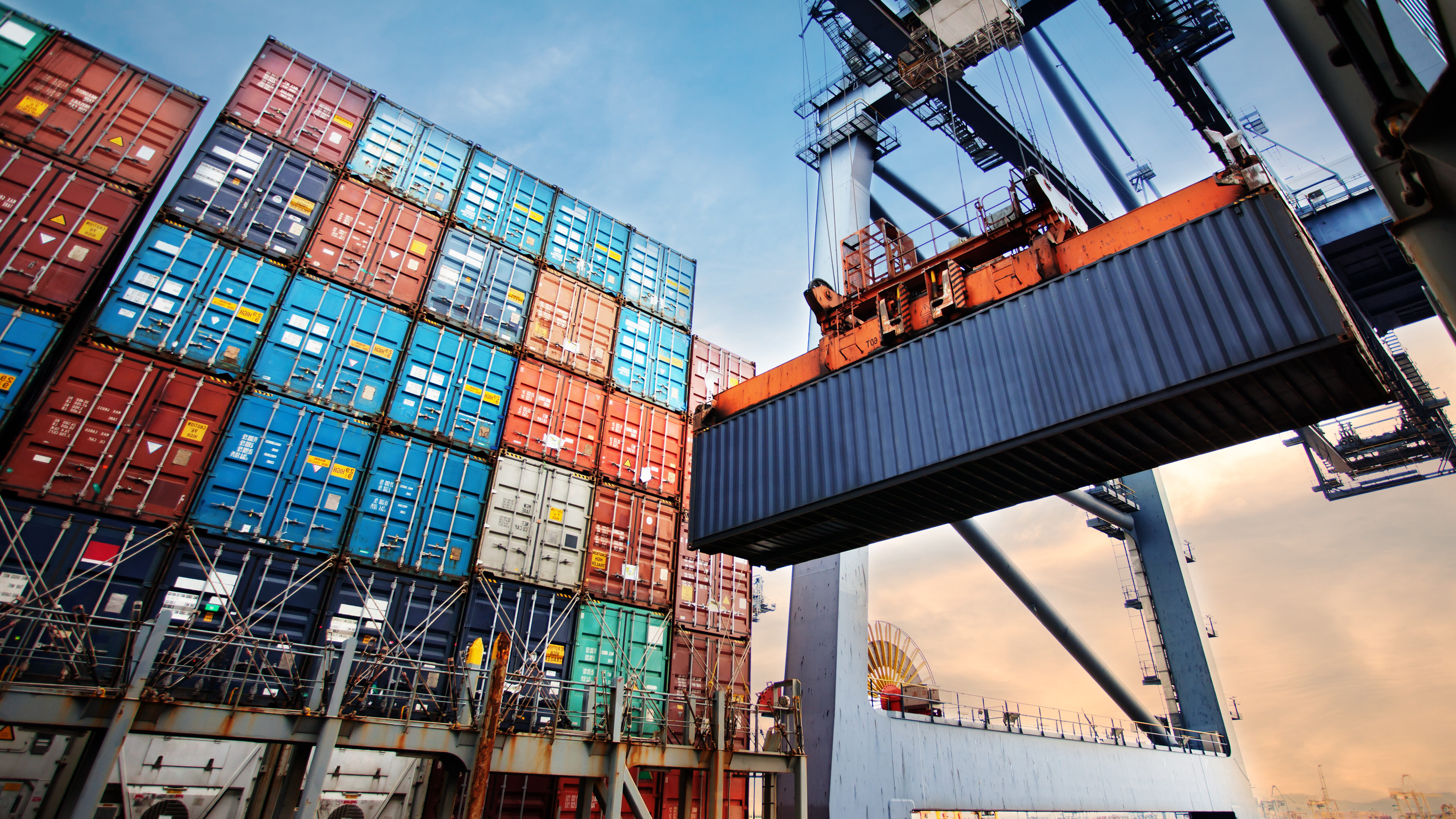Other FreightWaves Products
Lori Ann LaRocco
ITS Logistics invests over $30M to join digital visibility platform race
ITS Logistics is entering this digital arena with its container management and visibility platform ContainerAI.
Viewpoint: Norwegian tanker attack signals new threat to global trade
The threat to global shipping has grown following a Tuesday attack against a commercial vessel in the Red Sea with no apparent ties to Israel.
Ambrey expands advisory for Israel-linked vessels amid Red Sea attacks
Maritime security firm Ambrey has expanded an advisory to vessels in the Red Sea and Gulf of Aden, warning that rebels could be using outdated data to plan attacks.
Viewpoint: What Red Sea attacks mean for shipping
Attacks on commercial vessels in the Red Sea by Houthis militants could impact global trade.
Pipes of trade tell the tale of manufacturing growth
With China knocked off its pedestal of reliable, cheap products, other countries have jumped in and seized on the weakness.
Biden administration announces massive logistics plan
The Biden administration has announced a huge plan to tackle issues plaguing the U.S. supply chain that covers several cross-government partnerships.
CMA CGM investing in US infrastructure to control its destiny
CMA CGM, like many other carriers, is reporting serious revenue loss. The North America president and CEO goes into detail with American Shipper and explains why the company is investing in more physical infrastructure.
Auto inventory recovery will not be uniform — auto analytics company
In a conversation with American Shipper, CarGurus’ director of industry insights and analytics shows that some model inventories will be impacted by the strike and some will be fine.
Warehouse warning: Inflationary winds brewing
Companies are evaluating their warehouse footprint, assessing consolidation and not ruling out relocation, WarehouseQuote executive says.
Trucking fintech company Tank Payments nets economic empowerment prize
Austin, Texas-based Tank Payments, a trucking fintech company, has received Airbnb’s Economic Empowerment Award.
Economic losses from UAW strike reach $7.7 billion
Anderson Economic Group says the auto industry is entering the “danger zone” as the United Auto Workers strike continues with economic losses reaching $7.7 billion.
Another maritime strike brewing
On Friday, Unite the Union announced it registered a dispute over the increased medical standards on maritime pilots in the U.K.
UAW strike-caused losses rack up to nearly $4B so far
A new report from the Anderson Economic Group says the UAW strike against the Detroit Three resulted in $3.95 billion in losses in the first two weeks.
Federal report says lack of OSHA inspections puts warehouse workers at risk
The Office of Inspector General reported the rate of illness and injury at U.S. warehouses as “consistently high.”
Experts warn of dire supply chain effects from prolonged UAW strike
Logistics and supply chain experts are warning that an extended United Auto Workers strike could have major impacts on the trucking industry.
Panama Canal Authority: Vessel transits may be reduced if drought persists
The Panama Canal Authority on Tuesday suspended bookings for super vessels through Sept. 30 in its latest measure to remove a backlog waiting to traverse the canal.
Port of New York and New Jersey moves the most TEUs since October 2022
Based on current port data compiled by American Shipper, the East Coast and Gulf ports are strongly favored over West Coast ports.
Viewpoint: It’s time for shippers using Panama Canal to make decisions
With the Panama Canal drought expected to continue, now might be the time for shippers to seek alternatives.
Panama Canal Authority extends water restrictions
Supply chain disruptions could develop if the drought in Panama continues.
Viewpoint: A tale of 2 capacities
Third-party logistics provider ITS Logistics in its August report is warning clients of capacity issues both on the road and rails.
What the TEU tea leaves are telling us
We are now in peak season and, as all logistics data has shown, it is not going to be stellar.
Viewpoint: Another nail in the consumer spending coffin
The latest data from WarehouseQuote indicates retailers have ho-hum expectations for the holiday season.
Viewpoint: Impact of Canada ports strike to be felt for weeks
Now that the labor strike at Canada’s ports is over, it’s time to take a look at the delays it created.
Viewpoint: Data shows Canada port strike impacting US logistics
Ships continue to stack up as Canada’s port strike continues, according to new data from the ITS Logistics Port/Rail Ramp Freight Index.
Survey: More than two-thirds of CEOs call human rights a supply chain concern
A new survey from Proxima says human rights within the supply chain are a growing concern for leaders of companies across the U.S. and the U.K. Here’s what you need to know.
Seafarers’ contributions are vital for global economy
A new report is highlighting the contributions of seafarers and how these unsung heroes of the sea help boost gross domestic product.
Trade tea leaves showing peak season status quo
The logistics pipeline is a tea leaf forecasting China’s economy and the flow of freight tells investors the bottom line of logistics companies.
Despite labor agreement, some West Coast-bound ships still delayed
Data shows that some ships are still delayed after a tentative West Coast port labor agreement was reached this week.
Labor slowdowns hinder container processing at Pacific Northwest ports
Labor disruptions are slowing down ports in the Pacific Northwest as labor negotiations continue.
Tracking back-to-school orders: How do they stack up?
Analyzing back-to-school volumes can give you insight into retailer expectations and impacts on container trade.
What to look for as logistics industry preps for back-to-school season
Back-to-school season is near, and planning is underway among shippers and logistics companies.
Rail data shows reality of current supply chain
The impact of the movement of trade to the East Coast and Gulf ports can no longer be denied in the railroad data.
Contract season post-pandemic: Why would it be normal?
Nothing is normal in logistics and the power shift in the game of supply and demand has shifted back to the shipper.
Triple threat of trade and the outlook for rest of year
The health of the consumer is the engine that drives trade and profits. To gain insight into this, you need to look at the logistics pipeline.
Viewpoint: Labor flexing its muscles again in Germany
On Wednesday, Ver.di, the union representing tugboat and bridge operators among other critical public service jobs at the Port of Hamburg in Germany, announced a strike.
Viewpoint: Tug of war between higher wages and inflation
More than 130,000 civil and public servants who are part of the Public and Commercial Services Union will walk out in what it is calling the largest strike in civil service in decades.
Viewpoint: Inventory management key to stifling inflation
Inventory management is one pipe in the supply chain that can stoke the flames of inflation.
Marine data sector is shrinking through acquisitions
Belgian data and analytics company Kpler has acquired MarineTraffic and FleetMon in an effort to improve maritime intelligence.
Viewpoint: The 1 trade pipe that will signal a turnaround
Look at ocean freight bookings as a signal that manufacturing orders are increasing.
Viewpoint: Spring, summer goods latest victims in China’s COVID mess
Trade has been proven time and time again to blow away the bluster of political rhetoric. China’s sleight of hand with its COVID reporting has the WHO accusing China of “under-representing” the severity of cases, and the flow of trade can back up the WHO’s statement.
Viewpoint: Supply chain tells the truth about China’s COVID problem
China’s COVID problem and the impact on the supply chain are not going away anytime soon.
Viewpoint: Ocean girdle tightens as trade slims down
Like all previous maritime boom cycles, things are starting to turn down. That reshaping of trade is creating a misleading message on demand.
Viewpoint: Tricks or treats? World of logistics has big bag of rocks
Tanker and diesel crisis, looming rail strike and Mississippi drought adding pressure on logistics managers.
Trade takes people: Navigating new economic normal and year of labor
The imbalance of the supply chain now is based on human error and port congestion. We know trade is slowing down, but the congestion skews the reality of the pullback in orders.
Viewpoint: There are winners and losers in the diversion of trade
An increase in vessels calling on the East Coast and Gulf Coast ports is adding to wait times, which increases the delays of materials needed for manufacturers to complete their products or get finished products on store shelves.
Viewpoint: Trade is the harbinger of the supply chain — expect more labor strikes
A decrease in shipment arrivals as a result of congestion delays is a byproduct of labor strife.
New York/New Jersey delays implementation of fee for lingering containers
The Port of New York and New Jersey has put off charging ocean carriers for containers left at the port.
Viewpoint: Bloated — the only way to describe US and European ports
The U.S. and European ports are bloated by congestion — and only time can alleviate this situation.
Viewpoint: The year of labor — knowing your worth
Workers responsible for the transport of goods have pushed back on wage offers in recent months, but the flow of trade is choking in this tug of the purse strings between employers and labor.
Viewpoint: Bigger mallet needed for latest game of whack-a-mole
The latest whammy? A U.K. port strike could delay deliveries of Guinness.
Port of New York and New Jersey sets container fee, mandatory export levels
The Port of New York and New Jersey has announced a container fee on long-dwelling import or export containers, aiming to reduce an excess of empty containers dwelling at the port and free up space for container pickup.
Viewpoint: Flow of trade flashing more inflation despite decreased consumer demand
“Peak season” is a term in maritime that really has lost all meaning. Since the pandemic began, the ports have been processing record volumes of containers. Inventories were wiped out […]
Viewpoint: Why Europe is so important to the empty-container supply
All the pipes of trade are connected. If one pipe starts to have empty-container constriction, container prices will be influenced across the board.
Viewpoint: Another round of COVID testing in China means drayage delays coming
China’s “dynamic COVID-zero policy” means more government-mandated testing — and more drayage delays.
Viewpoint: Rail service from LA/Long Beach ports moving at speed of sloth
The buildup of vessels anchored off East and West Coast ports translates to around $30 billion, according to MDS Transmodal.
Viewpoint: German labor talks at impasse
Contract talks between German port employers and labor union ver.di have bogged down over questions about inflation’s impact on wage increases.
Viewpoint: How do you put value on today’s longshore workers?
Labor strikes and slowdowns at ports in Germany, Antwerp, Belgium, and Rotterdam, Netherlands, are crippling trade and could trigger more logistical inflationary pressures for U.S. importers and consumers.
Port director says East Coast seeing a boom
Port of New York and New Jersey executive director says the flow of trade originally bound for the West Coast and redirected to the East Coast has been substantial.
Viewpoint: The jaws of trade squeezing the supply chain
The jaws of the supply chain vise are squeezing trade so tight that the headache it is creating will be a whopper for logistics managers this peak season.
Viewpoint: CNBC heat map highlights global events that can impact US supply chain
The peak season of 2022 presents a variety of challenges for logistics managers, according to the latest findings of the CNBC Heat Map. East Coast ports continue to see tremendous […]
Will the Shipping Reform Act help rebalance scales? The FMC chairman thinks so.
Federal Maritime Commissioner Dan Maffei says in an interview that the bill will return “credibility to the supply chain.”
Shanghai’s weekend quarantine measure impacts exports
Shanghai’s weekend quarantine of 15 out of its 16 districts affected the flow of exports bound for the Port of Shanghai, according to CNBC Supply Chain Heat Map provider OrientStar Group.
Workers at 5 German ports walk out in ‘warning strike’ over pay
Both sides were slated to return to the negotiation table Friday.
Workers at 5 German ports walk out in a ‘warning strike
Employers association calls union’s work stoppage ‘absolutely irresponsible’. Both sides are slated to return to the negotiation table Friday.
Viewpoint: Trade stakeholders continue to pass the accountability buck
There is one reason behind this trade snarl. One. Can you guess? Bet you can’t unless you are an importer.
Viewpoint: It’s too soon to celebrate Shanghai reopening
SONAR helps break out key trade hot spots in CNBC Supply Chain Heat Map
Viewpoint: German labor strife the newest kink in supply chain crisis
The Port of Hamburg could suffer a container pileup if labor issues are not resolved in Germany.
FreightWaves part of CNBC’s new Supply Chain Heat Map
A new tracking analytic uncovers the undercurrents within the flow of trade.
How to win the trade game: NY/NJ port directors explain their success
The Port of New York and New Jersey’s outgoing and incoming directors discuss container migration, reliance on data and how they avoided problems plaguing West Coast ports.
Viewpoint: Shanghai’s reopening pledge nothing more than the boy who cried wolf
When it comes to lifting lockdowns in China, false hope will remain the norm.
SONAR charts check temperature of Shanghai’s ailing supply chain
China’s zero-COVID policy is a prescription for more inflation and supply chain “illness.”
What can go wrong next in China? Now there’s a lockdown in Zhengzhou
Trucking solutions, sitting cargo are among the issues in Henan province’s capital city.
Russian oil heading to storage in South Africa
“The only reason for an oil tanker to go to Saldanha Bay is to unload the oil into storage,” says an industry consultant.
Viewpoint: China COVID policies to squeeze flow of European exports to North America
China’s zero-COVID measures will make it harder for European exports to reach the East Coast because empty containers aren’t getting where they’re needed.
The real victim of Shanghai’s COVID lockdown? Intra-Asia trade pipeline
The movement of materials and finished products between China and its key Asian suppliers is taking a big hit — and the ramifications will be felt around the world.
Viewpoint: Shanghai’s disruptive impact on the summer supply chain
Zero-COVID policies seem effective only in creating widespread supply chain disruptions.
Under attack and low on supplies, 1,500 seafarers trapped in Ukrainian waters
Relief efforts are ‘proving extremely challenging’ for those stuck on 140 vessels in the conflict zone.
Viewpoint: ‘Shanghai Surprise’ — and a new lockdown to worry about
China’s latest move announcing a phased-in exit of the lockdowns for the eastern part of Shanghai has logistics managers warning clients about the impact it will have on truck deliveries.
Shanghai’s 2-stage COVID lockdown may make getting containers ‘almost impossible’
“This will limit the capability of factories to deliver containers to the ports,” said one industry consultant.
Viewpoint: Keep an eye on Shanghai
Shippers should brace for “skyrocketing haulage costs,” HLS Holding warns.
Viewpoint: It’s a tangled game of Twister for drayage in China
The multiple testing hurdles and current stay-at-home orders in China are slowing down this critical movement of trade and increasing prices.
China’s lockdown will impact more than electronics from Yantian, Shanghai
“50% of our ocean freight out of these two ports are non-electronic products,” explained Terry Unrein, COO of the Americas for Seko Logistics.
Logistics companies warn clients lockdown in Shenzhen will impact port activity
Seko Logistics, Worldwide Logistics among those reacting to China’s “zero-COVID” strategy.
2 tankers fill up with Russian oil after 45-day US countdown begins
Oil companies face a potential profits-versus-people dilemma as a flotilla of tankers carrying Russian oil heads for U.S. ports.
Viewpoint: That pain you’re feeling won’t be restricted to the gas pump
Consumers will see higher prices in the coming months at their retail and grocery stores as a result of the rise in black gold.
Embargo of Russian oil now spreading to Kazakhstan
Three shipments bound for the Port of Novorossiysk have been canceled.
Viewpoint: Don’t be fooled — the supply chain is not getting better
Russia’s invasion of Ukraine has heaped more uncertainty onto the global markets, adding to economic volatility.
Suez Canal toll hike: ‘Global trade just got more expensive’
The increase in Suez Canal tolls range between 5%-10% and become effective Tuesday.
ICS: Do not let Ukrainian, Russian seafarers become ‘collateral damage’
The International Chamber of Shipping issued a warning of the human capital component — Ukrainian and Russian seafarers are now locked out.
Project44: Asian ports see rising congestion
New data released by project44 shows vessels waiting to berth in Asia recorded an average increase from 13 days in December to 16.7 days in January.
Viewpoint: The hard truth about the trade deficit
Dysfunction at the nation’s largest port helps explain why the U.S. is losing the trade war to China.
Traxens acquires NEXT4; CEOs discuss port congestion
Traxens CEO David Marchand says that “known port congestion is only the tip of the iceberg.”
John Porcari Q&A: Current volumes are ‘floor, not the ceiling’ for the future
In this exclusive interview with American Shipper, the port envoy to the White House Supply Chain Disruptions Task Force discusses the state of the ports, the challengers at hand and the outlook for the future.
Viewpoint: ‘Disruption indicator’ blames US ports for 80% of global inefficiency
Despite the victory of saving Christmas, the congestion problems at the nation’s largest ports have not improved.
Viewpoint: 1 piece of the inflationary puzzle the Fed can’t control
While there are other factors in driving up supply chain costs, it cannot be refuted that maritime costs are adding to inflation.
Early forecast: East Coast ports will continue to thrive
Shippers are “fed up” with the West Coast logjam and “happy” to pay extra for East Coast destinations.
Container xChange warns of ‘ripple effect of disruptions one after the other’
“The global supply chain will be further strained because of these lockdowns in China and the result would be a further gap in global demand and supply,” says Container xChange CEO Johannes Schlingmeier.
Viewpoint: Purse strings are frayed — and US trade is held hostage
The finger-pointing of blame and the political promises and suggestions are not improving the flow of trade.
Viewpoint: Ningbo port’s partial closure more than just vessels berthing
The latest partial closure of the Port of Ningbo has forwarders shifting strategies to keep the flow of trade moving.
Viewpoint: 3 inflationary warning signals the world can’t afford to miss
“Expectations are that high consumer demand and low inventory levels will keep rates elevated well into next year,” says Peter Sand, chief analyst at Xeneta.











































































































